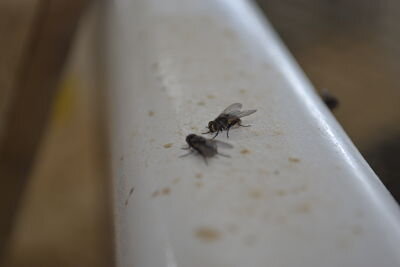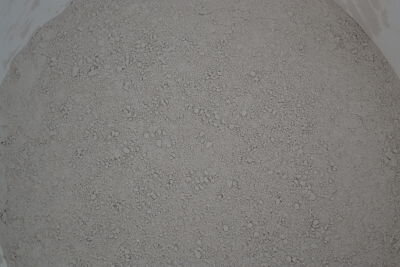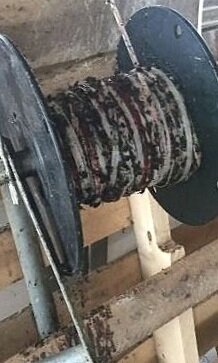You look in the calving pen and barely see it. Perhaps it is a set of twins (or triplets), or a small premature calf but we have all seen them – the “minis”. They are cute but the phrase most used is “don’t get attached” because their mortality rate is quite high. So what can we do to increase the odds of survival. Having raised a few small calves, I have found a successful - if labour intensive- approach for keeping them going.
For the small calf the risk of diarrhea and respiratory disease is higher, and they are more likely to suffer from dehydration due to their smaller blood volume. For this reason, disease prevention is critical. Additional challenges include their small stomachs which mean that they can not handle the larger meals that a bigger calf can and challenges with thermoregulation due to their small size and lower fat stores. For this reason, I have found that the principles of calf care, comfort, calories, cleanliness, are even more important.
Dexamethasone
The first step I recommend is to speak with your vet about your protocol for your next premature calf. Depending on their preferences and experiences with your farm they will probably recommend a drug protocol to help stimulate the newborn calf. This will likely include the use of dexamethasone, a steroid, which can help the breathing of underdeveloped lungs. This should be administered on the first day of life and potentially repeated over the course of the next week. This is dose dependent and should not be given without veterinary input.
Warmth
Once the calf is out and breathing, getting it dried off and warmed is critical due to their small body size and under-developed body. Whether this is blankets, a calf warmer, or just burying them in straw, keeping them warm to avoid hypothermia is critical. Remember a newborn calf has a thermoneutral zone of 15 to 25C and this will be much smaller for a mini calf. Once dry, I am a fan of straw bedding so that the calf can thermoregulate by nestling down for warmth. Additionally, in winter and cooler springs and falls, a jacket is necessary, I keep 3 or 4 small jackets on hand for these mini’s and smaller twins. I found it a worthwhile investment as the regular size jackets will trap manure and urine resulting in a wet and chilled calf
The umbilical cord
Thoroughly dip navel, repeat daily for 3 days or until cord is completely dry. Small calves have less reserve and may not be able to fight off infection. They need all the help they can get, and wet navels are portals for infection. Male calves are worse for this as they do pee right there and small calves tend to not get up and move around as much, resulting increased risk of laying in wet spots (see blog for more navel information)
Colostrum:
Feed appropriate amount of colostrum. Very small calves can not handle the recommended 4L a 90lb calf requires. For example a 45lb calf will only require 2L. However, their high risk and low body reserves make successful passive transfer even more important. Therefor, I will ideally feed a second meal with colostrum before switching to transition milk. Premature calves seem to have slower digestion in my experience, so time between first and second colostrum meals should be extended to at least 6-10 hours later, or hopefully when they pass meconium, which will indicate their intestinal tract is starting to work. The second meal, if tube fed, should again be small (1-2 L) to avoid over filling the calf. Ideally, the calf will suckle the second feeding.
The next two weeks of meals
I like bottle feeding when calves have a good suckle. After the first feeding, volume consumed is not a huge focus for me. Their bellies are small and it is hard to judge how much they can drink before they are full or tired. I offer around 1-2 L 4-5 times a day and monitor to make sure they are either maintaining or increasing the volume consumed. A decrease in either of these may indicate illness and close examination of the calf is needed. I will continue to offer small meals to the calf for 7-14 days depending on how small the calf is and if they show any signs of diarrhea. I won’t decrease the number of meals until they are consuming at least 2L/ meal and are healthy. During this time, I will ensure that at least one meal is either transition milk or a colostrum/milk blend. Both colostrum and transition milk are full of growth factors which will help with intestinal development, local immunity, and is higher fat, making it a denser meal for calves that need a little extra (blog). My gold standard would be two colostrum meals followed by 2-3 weeks of 4-5 meals per day of transition milk. This protocol can be exhausting for the calf raiser and colostrum supplies can be limited. However, if it can be accomplished, I see mini calves really thrive on this protocol.
Two weeks to weaning
Once a calf is consuming around 8L/day, then I will start reducing the number of meals, dropping one meal a week until I match the daily meal rate of the other calves. During this time, I will monitor total intake to ensure we are not going backwards on intakes. Once a small calf is drinking with the rest of the group I keep them on milk longer than 8 weeks. My rationale is a calf born at 260 days will need at least an extra two weeks on milk to reach the same size as a calf born at 280 days.
I find once these mini’s have passed 3-4 weeks of age these little calves can really grow and thrive, becoming little butterballs before shooting up.
A warning.
A calf that is born early or is unusually small may have birth defects which will not be apparent until later. These are the heart breakers. They may fail to grow or suddenly die from an unseen condition after you have spent a lot of time and attention on them. Grow attached at your own risk.















